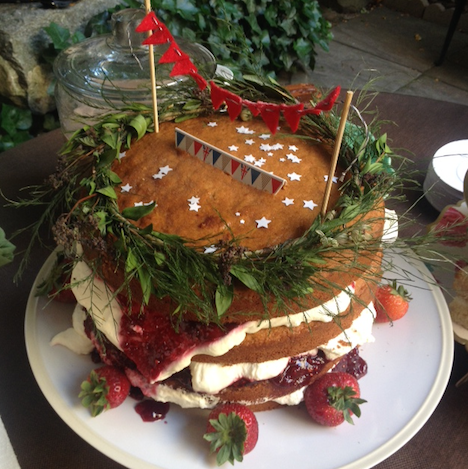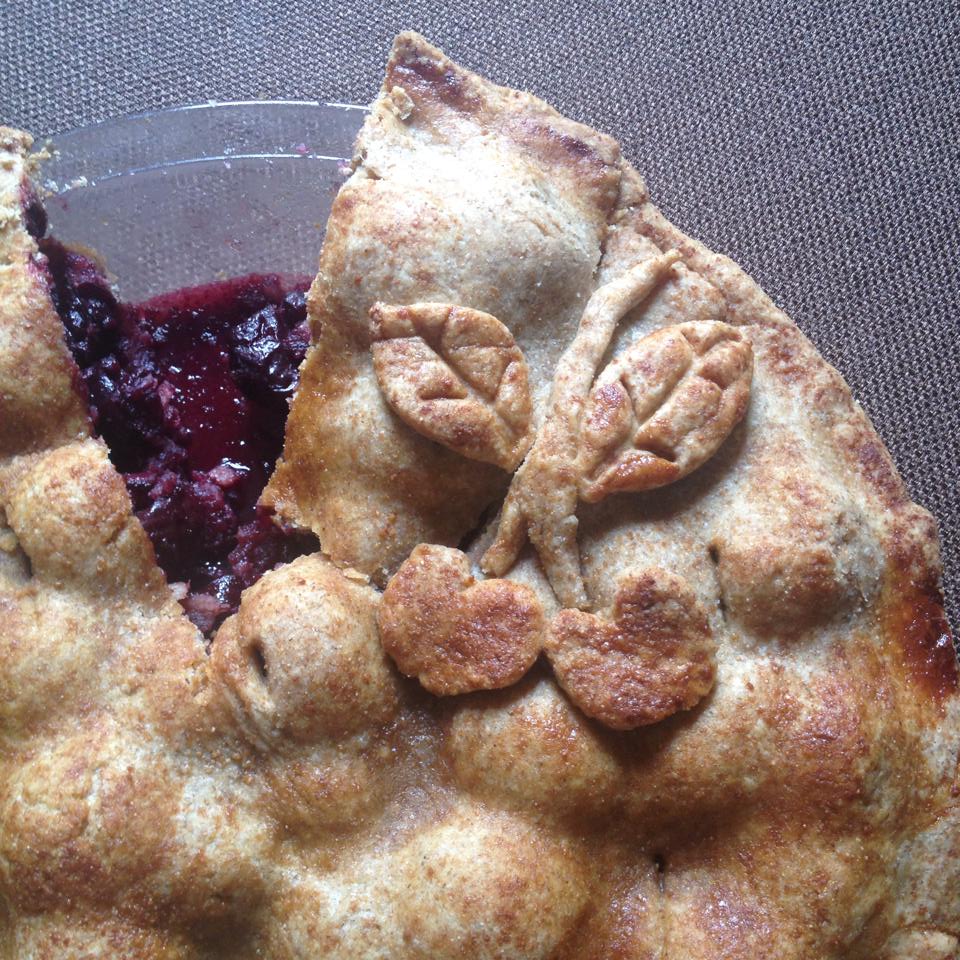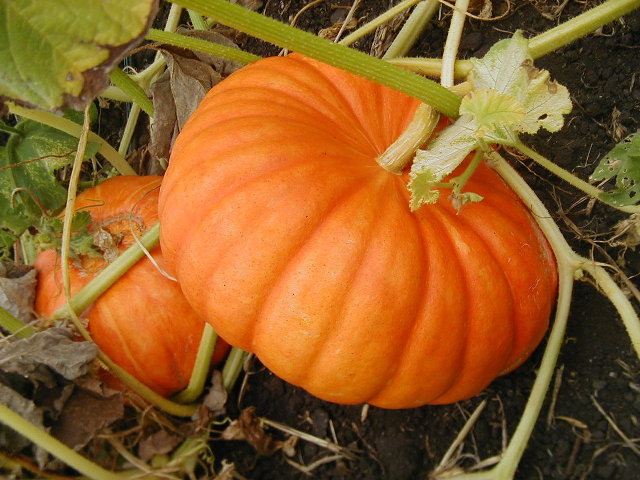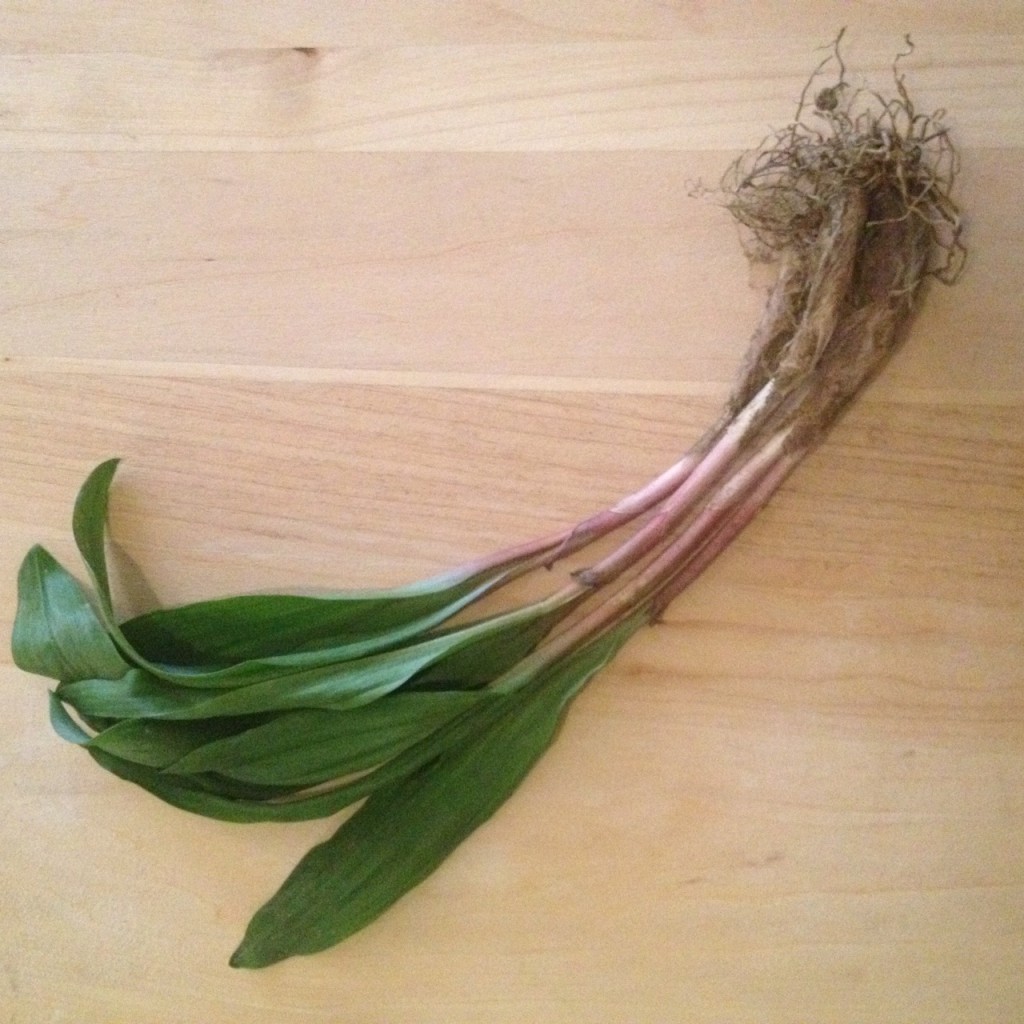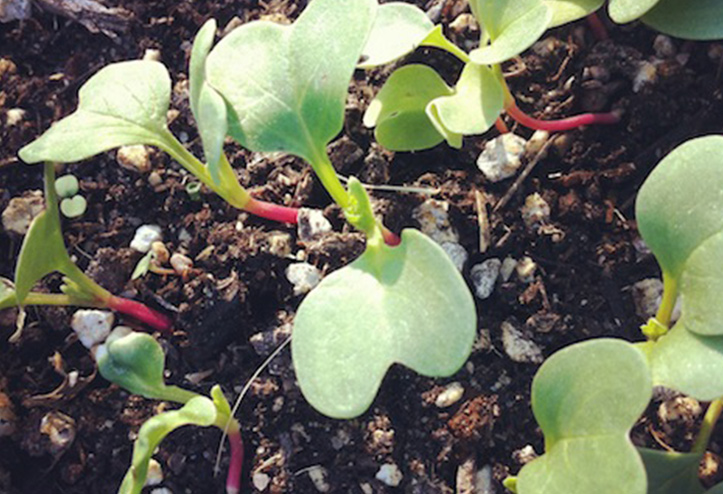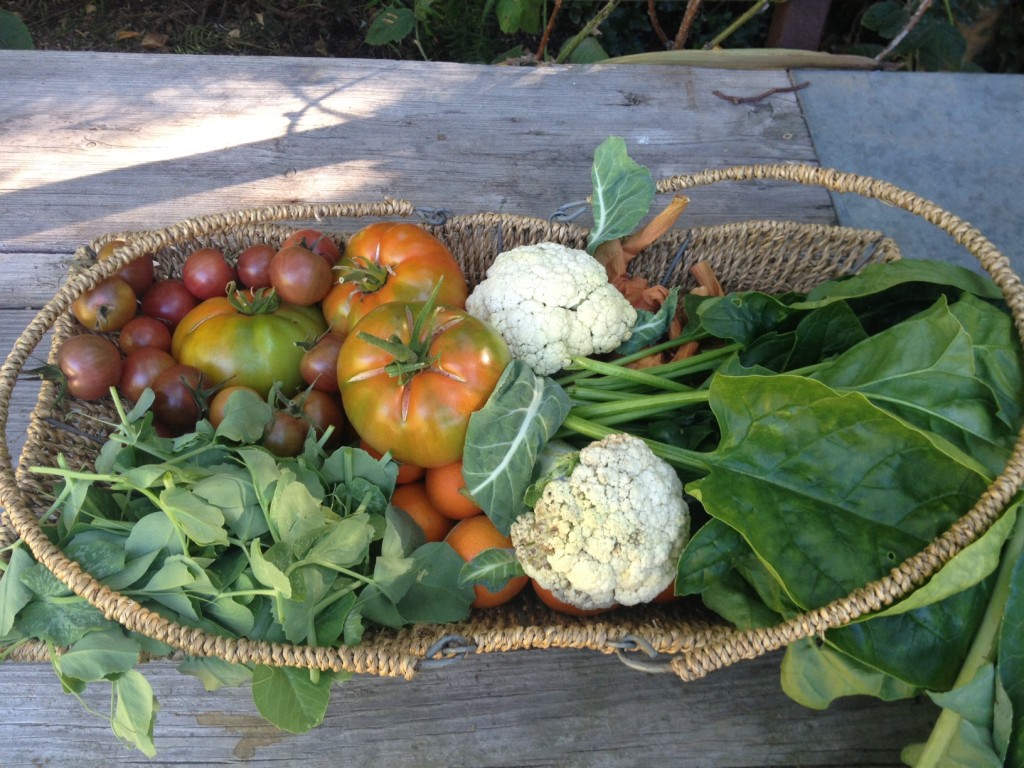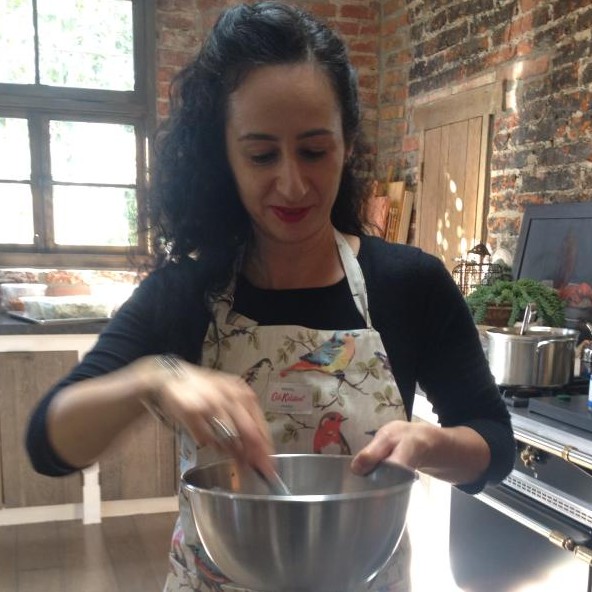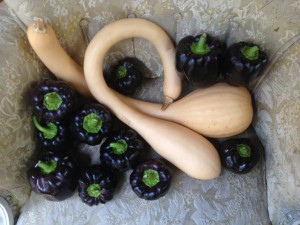
I’m excited, my friend Kristine Kidd is coming for lunch at my cabin on Monday. She’s kind and generous, with an incredible intellect, and a passion for food. And she was Food Editor for Bon Appetit magazine for over 20 years, which is fair grounds for being a tad nervous about making her lunch…
Oh, and Kristine is gluten-free and allergic to garlic, so that rules out my home-baked breads, and pretty much anything Italian. And she’s the author of a number of very wonderful cookbooks, so I can’t just serve something unimaginative, even if it’s delicious.
Luckily, the garden is going crazy this month, with tons of curly-whirly trombetta squash and buckets of Black Beauty bell peppers, so called because they’re black. So my main ingredients are intrinsically simple and seasonal, and also have a nice little twist. The trombetta squash are closely related to butternut squash but are less sweet, and the black bell peppers are very similar to green bell peppers, but also less sweet.
So I’m going to throw them into the oven with a gorgeous olive oil I recently discovered, and with plenty of fresh thyme, so delicious with fall squash, particularly hard squash like butternut, spaghetti, and trombetta.
I’ll cook them low and slow, the squash in an open pan, and the peppers in my cast iron Dutch oven.
I’ll cook my homegrown veggies sprinkled with French grey salt and crushed peppercorns, and I’ll caramelize a few lemons too, skins and all. Then I’ll whizz them into a satisfying autumnal soup with a little ground coriander and cumin seeds, and serve it with a wedge of fresh lemon to the side of each bowl.
I may also make a tapenade out of the beautiful black bell peppers, mincing them with raw black olives and tasty olive oil from the baking pan, and then serve with crudites as an alternative to soup and salad.
Here’s my recipe for Caramelized Lemon, Squash and Bell Pepper Soup. The quantities given are rough guides, please feel free to vary them to suit your own autumn harvest and varieties in your own garden or farmer’s market.
Recipe
Ingredients:
olive oil
12 bell peppers, quartered, with stems and seeds removed
1 large trombetta squash OR 1 medium butternut squash, halved lengthwise, stem and seeds removed
2 lemons, halved
fresh thyme, stalks removed
sea salt
crushed black peppercorns
1 large leek, roots removed, washed and chopped into 2″ chunks
2 large carrots, tops removed, and chopped into 2″ chunks
3 stalks of celery
3 tablespoons coconut oil
2 tablespoons ground cumin seeds
2 teaspoons ground coriander seeds
Method:
Heat the oven to 350ºF. Drizzle the olive oil into the bottom of a large open pan and a cast iron Dutch oven. Add the bell peppers to the Dutch oven, and the squash and lemons to the open pan. Drizzle everything again with a little more oil to coat. Sprinkle generously with fresh thyme leaves, salt and pepper. Bake for about 40 mins to 1 hour or longer, until the vegetables and lemons are all very soft and caramelized.
Meanwhile, heat 14 cups of water in a large stock pot with the leek, carrots and celery, plus a tablespoon of salt and a tablespoon of pepper. Bring to a rolling boil, then reduce to a slow simmer and cook for an hour.
Remove the stock vegetables and discard, and retain the stock water.
When the roasted vegetables are ready, combine them in batches with a little stock, including the whole lemons, and pulse in a blender or high-powered blender. Set aside.
Over a medium heat, melt the coconut oil in a small frying pan, then add the cumin and coriander when no solid coconut oil remains. Stir with a wooden spoon for one minute, until the spices have released their aromas, but being careful not to burn them.
Pour the spice mixture into the soup, and stir to combine.
Ladle into bowls and serve with a twist of fresh lemon.
#Top Tip: If possible, leave the soup to develop over 24 hours before serving. The flavors continue to mingle and combine if you make the soup the day before it’s due to be eaten.






